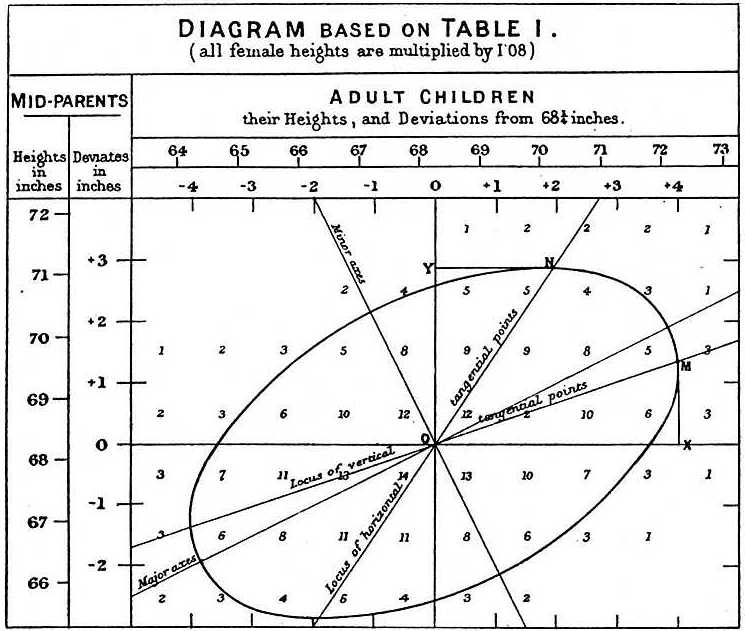

@Book{Stigler:86,
author = "Stephan M. Stigler",
year = "1986",
title = "The History of Statistics: The Measurement of Uncertainty
before 1900",
publisher = "Harvard University Press",
address = "Cambridge, MA",
isbn = "067440341X",
lccn = " *QA 276.15 S75 1986"*
}
Meetings take place on alternate Friday afternoons, 2:00-3:00 in the TEL Building, Room 5082; click here for a York Campus map.
Abstract: I start with a problem raised in a recent paper in The American Statistician related to Galton's first diagram of a bivariate (normal) correlation surface, an alleged non-linear relation between heights of mid-parents and their children.Re-tracing the steps Galton might have taken to arrive at the theory of correlation and regression from this diagram leads to some interesting insights and further questions. I conclude that Galton could not have arrived at the theory of regression in relation to concentric ellipses of the bivariate normal distribution solely by empirical observation as Pearson (1921) described. This leads to questions of the invention of the scatterplot. I describe a remarkable 1832 paper by J. F. W. Herschel that contains the first known description of modern scatterplots and highlights the importance of smoothing.
Abstract: I would like to examine the degree to which the concept of the mean applied in the Canon of Polykleitos agrees with, and differs from, the modern statistical concept of the mean.I plan to include some points on historical methodology, and the use of modern scientific and statistical results in historical studies. (I will mention briefly some relevant insights that arose from Galton's composite photographs of criminals in England.)
Abstract:
Multivariate analysis of variance (MANOVA) and multivariate multiple regression (MMRA) extend the ideas and methods of univariate ANOVA and MRA in simple and straight-forward ways. But the familiar graphical methods typically used in the univariate response setting are inadequate for showing how measures in a multivariate response vary with each other, and how they vary with explanatory factors.I describe a variety of graphical methods for multiple-response (MANOVA and MMRA) data aimed at understanding: (a) what is being tested in a multivariate test, (b) how factor/predictor effects are expressed across multiple response measures, (c) effects of outliers and violations of assumptions.
Abstract:
Adolphe Quetelet had a profound impact on the transfer of statistical methods and statistical thinking from physical science to a budding social science in the early 19th century. Stigler discusses Quetelet's contributions under two related rubrics: the concept of the "average man," meant to apply statistical methods and notions from astronomy to social data, and the use of the "normal law of error," both for fitting observed distributions of social data, and as a means for deciding whether heterogeneous causes had been accounted for.I present an overview of Quetelet's contributions and his impact on the application of statistical methods to social science.
Abstract:
The Null Hypothesis Significance Testing (NHST) controversy has surrounded the practice and interpretation of Statistics in Psychology for many decades. After my first full-course experience in teaching Introductory Statistics, I like to present the approach I had taken as the foundation of my course in light of the controversy as well as some recommendations of reforms that have been made by others. I will also review new innovations in statistical software that have made my approach feasible, as well as present some empirical evidence of students' capability of understanding key misconceptions of NHST.